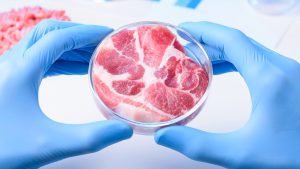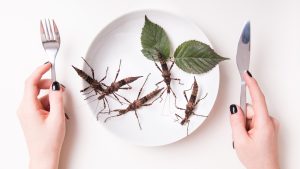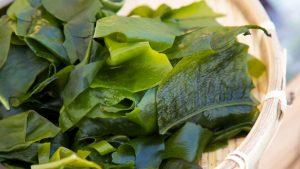Overpopulation and reduced biodiversity have brought us into a time of uncertain food security. One way of ensuring our survival is to secure an alternative food source or to explore novel foods.
According to the European Commission, novel foods are those without a history of consumption in any given region. Offering the prospect of meeting both human and planetary health goals, three of the most popular novel foods of 2019 are lab-grown meat, edible insects and seaweed.
How lab-grown could replace farmed beef
Since 2013, many lab-grown meat manufacturers have launched in North America and Europe, most of which produce a meat that is grown in amino acids, natural growth factors, sugars and salts from fetal bovine blood.

Lab-grown meat offers consumers an alternative to eating meat products which require breeding and slaughtering. Lab-grown meat uses less land and water to produce and offers man the potential to eat meat in a time of environmental uncertainty.
Despite its environmental benefits, lab-grown meat could still become more sustainable as the production labs often use a fair amount of electricity. Researchers can combat this by powering facilities using renewable energy.
Will edible insects offer humans a sustainable protein?
Insects are at the forefront of the sustainable novel food movement. Requiring less land, water and food to produce, edible insects offer consumers a guilt-free, sustainable source of protein. Compared to edible insects, producing the same amount of beef would require 25 times more land and triple the amount of water.

In order produce large amounts of edible insects, producers must ensure a safe food source, often a mixture of vegetables, fruit or grains. Researchers suggest that organic waste streams may be used as food for insects raised for human consumption.
Unfortunately for those suffering with a lobster allergy should consult their doctor before consuming insects as they may be allergic to certain species.
How sustainable is eating seaweed?
Seaweed is often found in East Asian foods and in 2015, global seaweed production the total of 30.4m tonnes in wet-weight. Seaweed aquaculture, or the production of seaweed, uses very little fresh water. In times of drought, seaweed may offer people with a sustainable food source without sacrificing human drinking water.

Seaweed aquaculture risks favouring specific breeds of successful plants, this would decrease the biodiversity of these plants and open the species up to disease and pests. Production of seaweed could also sacrifice the ecosystems in which it is produced.
When species of seaweed are produced at sustainable levels in their natural habitat, seaweed aquaculture can offer coastal populations with a sustainable food source without using an human-used land or water.







